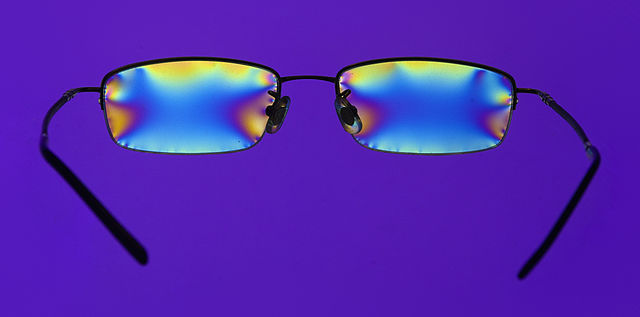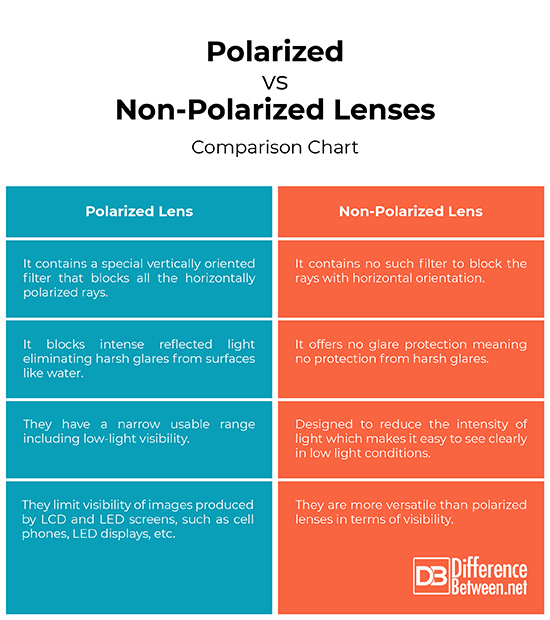Difference Between Polarized and Non-Polarized Lens
What once were the hallmarks of the 90’s classic action movies have now become more than just a fashion statement. Today, no outfit is complete without them. Yes, we are talking about sunglasses or optical frames. They have become a cool fashion accessory and most people wear sunglasses for fashion, even when it’s cloudy outside. Well, sunglasses are not only fun to wear, but they are equally fashionable and as well protect your eyes from bright sunlight or reflected glare. Studies suggest sunlight emits harmful UV rays which can lead to macular degeneration and cataracts. This is where the right pair of sunglasses comes to the picture.
Aviators are the fad these days. They have been the pilots’ protective eyewear for decades and are still the most preferred style of sunglasses. However, finding the right pair of sunglasses is not that simple as it seems. There are a lot of aspects that you need to factor in, before buying one. But, one of the most important factors to consider while looking for the right pair of sunglasses is probably the lens technology. With so many lens technologies out there, it’s quite easy to get confused. The most popular question people often ask regarding the lens technology is – which is better, polarized or non-polarized lens? We highlight some key points comparing the two on various fronts.
What is Polarized Lens?
The term polarization has something to do with sunlight and glare. Well, technically, it describes a quality of light rays. When a light ray emanates from a source, let’s say from the sun, it possesses a certain qualities that are intrinsic to it. Like amplitude represents brightness or intensity of a light, wavelength represents color or type of the light, similarly polarization has something to do with glare. Polarized lenses are made with a vertically oriented filter within the matrix of the lens and these filters will only allow light rays with a vertical polarization to pass through the lens. All horizontally polarized rays are blocked. So when wearing sunglasses with polarized lenses, you are less bothered by the glare.
What is Non-Polarized Lens?
Unlike polarized lenses that have a special coating that reflects sunlight away from the eye to reduce glare, non-polarized lenses offer no such glare protection. In fact, they are just tinted and so designed to block light. They do not have any kind of filter to remove glare. Non-polarized lenses, however, reduce the intensity of light which makes it easy for you to be able to see clearly in strong or dark light conditions. They are better for nighttime and low light conditions when vision is slightly limited. In fact, they can be used in the widest range of light conditions, but without any glare protection. In simple terms, non-polarized lenses are designed to reduce the amount of light that hit your eyes directly.
Difference Between Polarized and Non-Polarized Lens
Technology
Polarization describes a quality of light rays. Polarized lenses are made with a vertically oriented filter within the matrix of the lens and this filter blocks all light of horizontal orientation while allowing only allowing light rays with a vertical orientation to pass through the lens. It takes advantage of the fact that reflected light travels in one direction, and with the help of the special filter it virtually eliminates glare. Unlike polarized lenses, non-polarized lenses offer no glare protection but they are specifically designed to reduce the intensity of light which makes it easy to see clearly in low light conditions, especially during night.
UV Protection
Sunlight emits harmful UV rays which can lead to macular degeneration and cataracts. UV rays also cause sunburn which in turn damages the skin cells. Plus it also increases risk to other eye problems and suppresses the skin’s immune system. Polarized lenses provide 100 percent protection from the harmful UV rays. Sunglasses that offer adequate UV protection ensures your eyes are well protected from the above mentioned issues. Plus they also provide protection against UVA and UVB rays. Non-polarized lenses also offer adequate UV protection as well as block the unwanted hue but they cannot counter the effects of horizontal polarization.
LCD/LED Visibility
Although polarized lenses prevent the overwhelming majority of light reflected off the surface of water, car hood, roads, snow, and so on, from reaching your eyes, eliminating glare, they might cause problems with anti-glare technology. Also, certain LED numbers cannot be seen with polarized lenses and they tend to limit visibility of images produced by LCD and LED screens, including cell phones, gas pump displays, etc. The polarization limits the photochromic range, which makes them relatively less versatile than non-polarized lenses. This is why pilots cannot wear polarized lenses while flying.
Polarized vs. Non-Polarized Lenses: Comparison Chart
Summary of Polarized vs. Non-Polarized Lenses
Choosing the right pair of sunglasses is a two-step process – picking the right frame and selecting the lens. There are two basic options when it comes to lens technology – polarized and non-polarized lenses. Non-polarized lenses are the least expensive but they have a narrow usable range due to visual light transmission, plus they offer very little or no protection against harsh glares. However, they can be used in a wide range of light conditions, including low-light conditions. Polarized lenses, on the other hand, offer adequate protection against harsh glares as well as harmful UV rays, but they are also the most expensive. They seem to be the right choice when you’re constantly under the sun.
- Difference Between Caucus and Primary - June 18, 2024
- Difference Between PPO and POS - May 30, 2024
- Difference Between RFID and NFC - May 28, 2024
Search DifferenceBetween.net :
Leave a Response
References :
[0]Image credit: https://upload.wikimedia.org/wikipedia/commons/thumb/0/0f/Test_for_polarized_and_non-polarized_sunglasses.jpg/636px-Test_for_polarized_and_non-polarized_sunglasses.jpg
[1]Image credit: https://upload.wikimedia.org/wikipedia/commons/thumb/3/3b/Polarized_Stress_Glasses.jpg/640px-Polarized_Stress_Glasses.jpg
[2]Schwartz, Gary S. Around the Eye in 365 Days. New Jersey: SLACK Incorporated, 2008. Print
[3]Williams, Brian. The Science of a Pair of Glasses: The Science of Light. New York City: Gareth Stevens Publishing, 2009. Print



